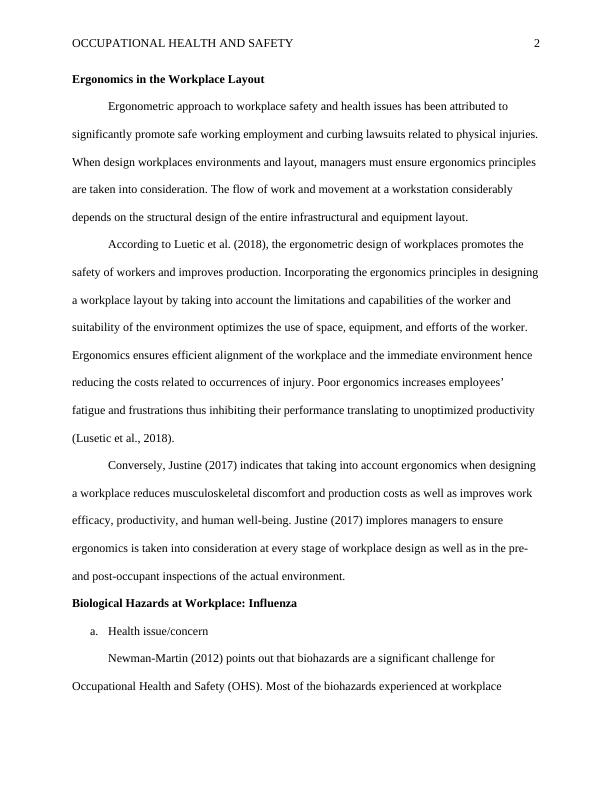Ergonomics and Biological Hazards in Occupational Health and Safety
The assignment discusses the importance of incorporating ergonomics principles in workplace layout design to promote safety, improve production, and reduce costs related to physical injuries.
5 Pages828 Words97 Views
Added on 2023-05-30
About This Document
This article discusses the importance of ergonomics in workplace layout and how it can promote safe working conditions and improve production. It also explores the impact of biological hazards like influenza on employees, including who is most vulnerable and the economic impact of lost productivity. References are included.
Ergonomics and Biological Hazards in Occupational Health and Safety
The assignment discusses the importance of incorporating ergonomics principles in workplace layout design to promote safety, improve production, and reduce costs related to physical injuries.
Added on 2023-05-30
ShareRelated Documents
End of preview
Want to access all the pages? Upload your documents or become a member.
Workplace Safety Plan for Bacterial Infection Hazard in a Piggery and Abattoir Setting
|11
|3077
|180
Work Place Hazard in Nursing: Types and Recommendations
|16
|1157
|449
Occupational Safety Hazards at Workplace
|10
|2289
|254
Occupational Safety and Health Advocacy
|9
|2263
|392
Training, Motivation, and Workplace Wellness: Recommendations for Development and Integration of a Wellness Program
|12
|2153
|86
Reflection on Health and Safety at Workplace
|15
|4238
|68


